Key takeaways:
- Post-event reviews in the breakdancing community foster growth, collaboration, and a sense of belonging among participants.
- Gathering honest feedback through surveys and discussions helps identify areas for improvement and enhances future event quality.
- Analyzing performance metrics alongside participant feedback provides insights into engagement and potential changes needed in programming and venue choice.
- Creating supportive environments and recognizing small details can significantly enhance participant experience and community connections.
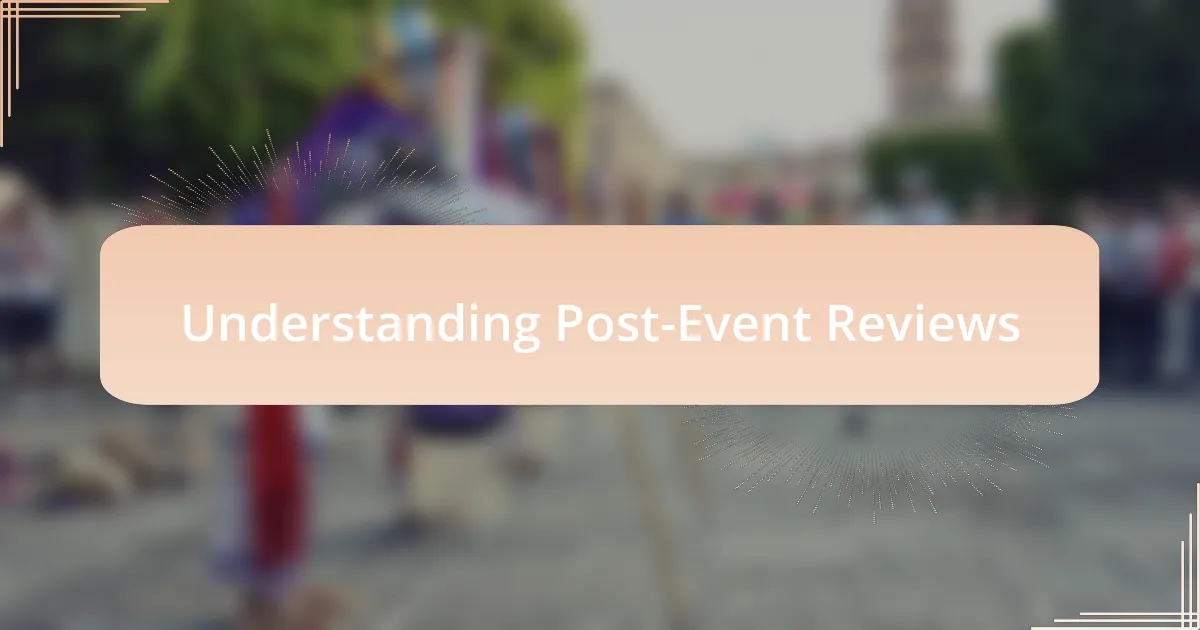
Understanding Post-Event Reviews
Post-event reviews are essential for growth and improvement in the breakdancing community. Reflecting on what worked well and what didn’t can lead to invaluable insights. When I think about the most memorable battles I attended, I realize that the discussions afterward often shaped the future of our events.
Conducting these reviews allows us to capture the unique energy and vibe of each event. I remember standing in a circle with fellow dancers, sharing our thoughts on the atmosphere and the performances. Was the judging fair? Did the crowd connect with the battles? Those conversations were not just about reliving moments; they were about fostering a sense of community and collaboration.
Every feedback session can feel a bit like a dance cypher—open, honest, and sometimes vulnerable. I’ve experienced how sharing my own feelings about a particular battle can encourage others to open up as well. It’s fascinating to see how a simple review process can transform our experiences into collective knowledge, helping us all to raise the bar for future events.
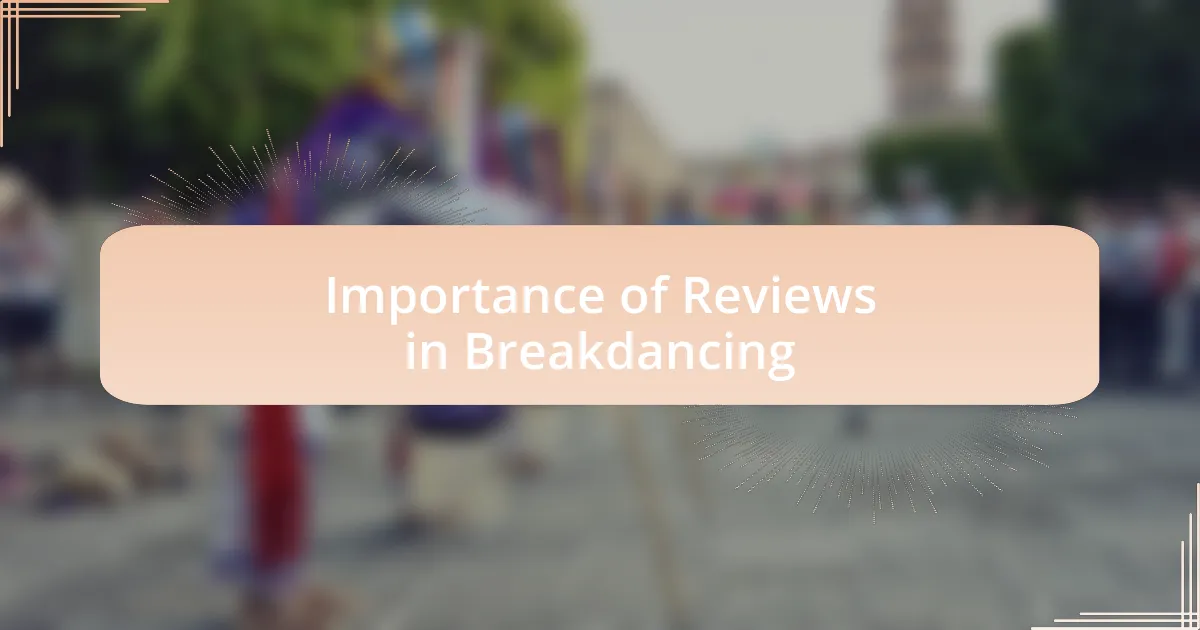
Importance of Reviews in Breakdancing
When I think about the impact of reviews in breakdancing, I often reflect on how they can change the trajectory of our events. I remember attending a jam where the energy was electric, but the feedback revealed that some judges were perceived as biased. This kind of honesty is not just crucial; it’s a catalyst for change, pushing us to create a more inclusive atmosphere in future competitions.
Reviews serve as a mirror for our community, allowing us to see ourselves clearly. After one particularly intense battle, I gathered with some friends to discuss our feelings about the judging criteria. As we shared our perspectives, I could feel the weight of our words; it was clear that addressing these critiques could help elevate the quality of future events. How can we grow if we don’t acknowledge our shortcomings?
Moreover, the power of review sessions lies in their ability to unite us. I often find that these discussions lead to deeper connections between dancers. Just last month, after a successful competition, my crew and I spent hours dissecting our performances and the overall vibe. It was more than just critique; it was a bonding experience that reinforced our shared passion—reminding us that we’re all in this together, striving for excellence in the breaker community.

Steps to Conduct a Review
The first step in conducting a post-event review is gathering feedback from participants. I make it a point to create a simple online survey that captures both quantitative and qualitative responses. After a recent battle, I invited fellow dancers to share their thoughts. Reading through their honest opinions, I felt a whirlwind of emotions—excitement for the praise felt balanced by the reality check provided by the criticisms.
Next, I recommend organizing a focused discussion session. I once hosted a gathering at my favorite local spot, where we shared pizza and dissected the event. As we spoke, the varied experiences of the dancers illuminated aspects I hadn’t considered before. It was eye-opening to hear how different people perceived the same moments and decisions—for instance, one dancer discussed how a sudden change in music disrupted their flow. Isn’t it fascinating how one small detail can affect an entire performance?
Finally, synthesizing the collected feedback into actionable insights is crucial. I often create a summary report that highlights key themes and specific suggestions for improvement. After our last competition, this step became particularly empowering; as I shared the findings with event organizers, I sensed a readiness for change in the air. How can we truly evolve without a solid plan grounded in our community’s voice?
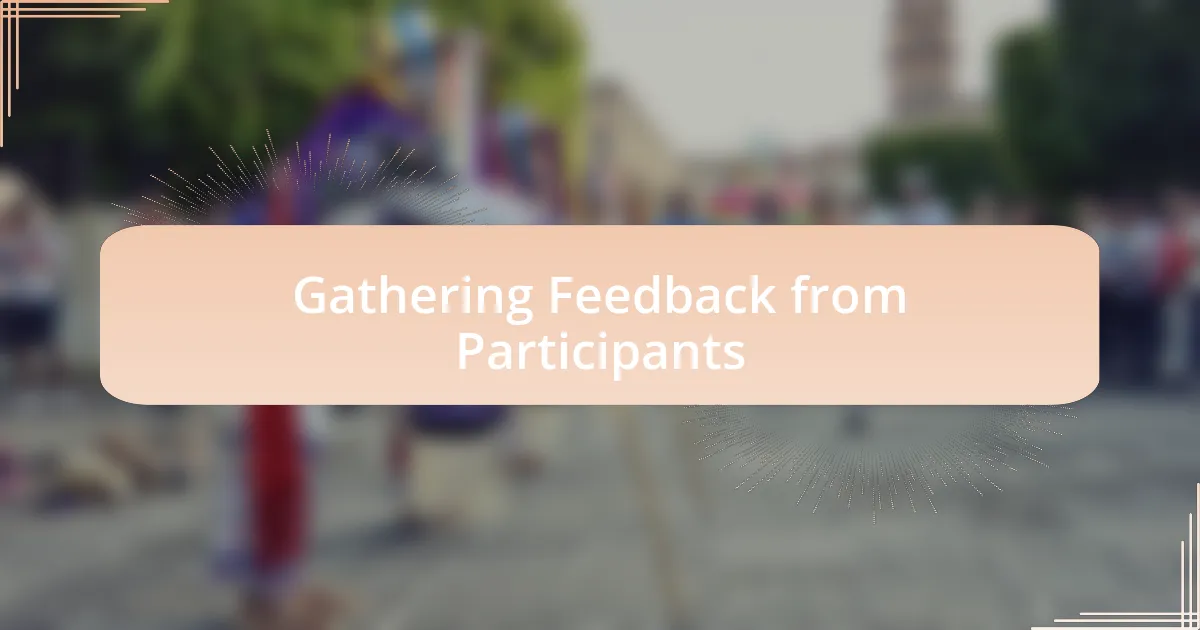
Gathering Feedback from Participants
Gathering feedback from participants can feel like unearthing hidden gems in a treasure pit. I remember conducting a quick pulse-check after one event, where I simply asked dancers to rate their experience and share one takeaway. The results were surprising—some expressed a desire for more opportunities to showcase their skills beyond just battling, while others valued the community connections made during the event. It’s a gentle reminder that our dancers crave not just competition but a sense of belonging.
Another effective method I’ve used is to create a conversation circle, where participants felt safe to express their thoughts candidly. During one session, a dancer opened up about feeling out of place among more experienced competitors. Listening to her, I couldn’t help but reflect on my own early struggles and how important it is for everyone to feel included, regardless of skill level. Doesn’t it make you wonder how many untold stories and feelings are swirling beneath the surface after an event?
I always emphasize the importance of not only collecting feedback but also showing that it matters. Following a recent event, I took time to acknowledge and address the concerns raised by dancers in our community feedback forum. In doing so, I felt a renewed sense of trust growing among participants, reinforcing that their voices are heard and valued. How can we build a stronger community if we’re not willing to listen and adapt together?
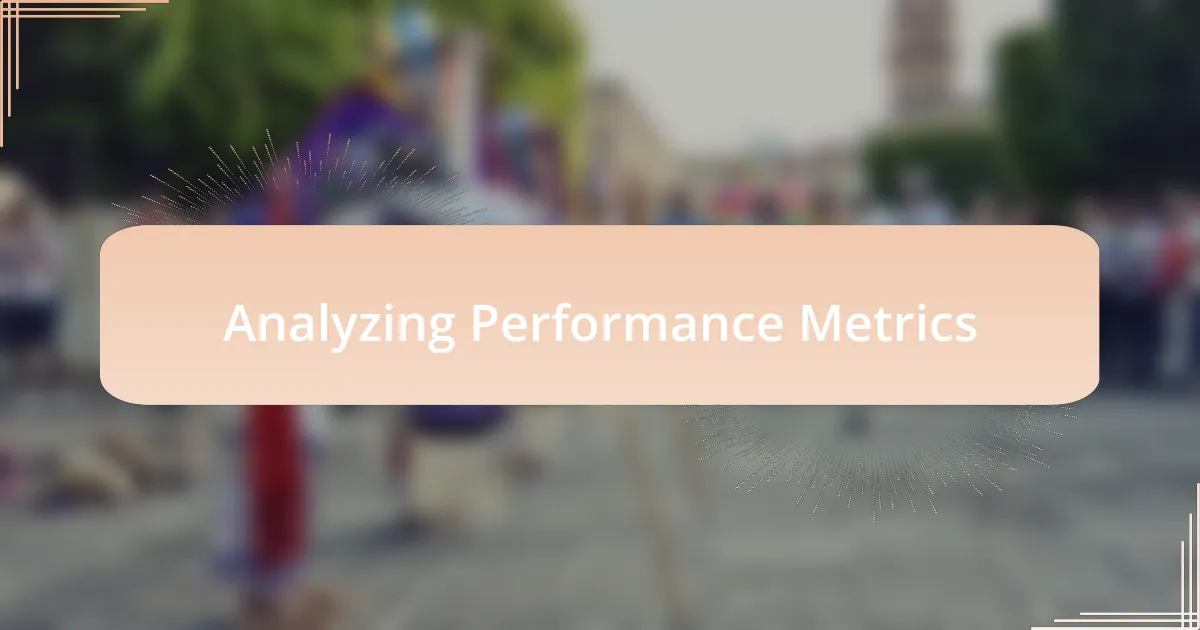
Analyzing Performance Metrics
When it comes to analyzing performance metrics, I often start by examining attendance data closely. I recall one event where we saw a notable drop in the number of participants compared to previous years. Delving deeper, I discovered that coinciding with our event was a major local festival, shifting dancers’ focus. This experience taught me the significance of timing and how external factors can directly impact our community engagement.
Another important metric I focus on is the engagement rates throughout the event. After tracking social media interactions, I was surprised to find that the posts during battles received significantly more engagement than those promoting workshops. It made me think—are we doing enough to highlight the value of skill-building sessions? This realization prompted us to reimagine our marketing strategies, ensuring that every element of the event received the spotlight it deserved.
Lastly, analyzing participant feedback alongside performance metrics provides a fuller picture. After a highly competitive event, I noticed several comments mentioning the need for clearer judging criteria. It struck me that while excitement ran high, clarity could enhance the experience and alleviate tension. Don’t you think that creating transparency in competitions not only elevates the dancers’ experience but also fosters greater trust in the judging process? This connection between metrics and genuine participant sentiment is vital for our growth.

Applying Insights for Future Events
When translating insights from past events into future plans, I lean heavily on the participant feedback we’ve gathered. There was one time after an event where several dancers shared their thoughts about post-battle networking opportunities being scarce. This made me realize that providing informal spaces for dancers to connect could enhance the overall experience. Isn’t it fascinating how a simple conversation can lead to collaborations or friendships that last beyond the event itself?
Moreover, I think about the lessons learned regarding our venue choice. During a recent competition, participants expressed that the layout made it difficult to navigate between battles and workshops. I remember standing at the entrance and noticing the confusion on the faces of newcomers. From that moment on, I vowed to consider both functionality and flow when selecting venues, ensuring that our events feel welcoming and intuitive. How can we truly cultivate community if our settings hinder interaction?
Lastly, I can’t underestimate the importance of diversifying our programming based on feedback. One year, we incorporated a panel discussion featuring seasoned dancers, which received a tremendous response. The audience was genuinely engaged, sparking rich conversations and a sense of connection. Seeing how much participants craved that kind of exchange made me think—how can I cultivate even more opportunities for shared learning and inspiration in future events? I’m excited to explore ways to keep evolving based on these valuable insights.
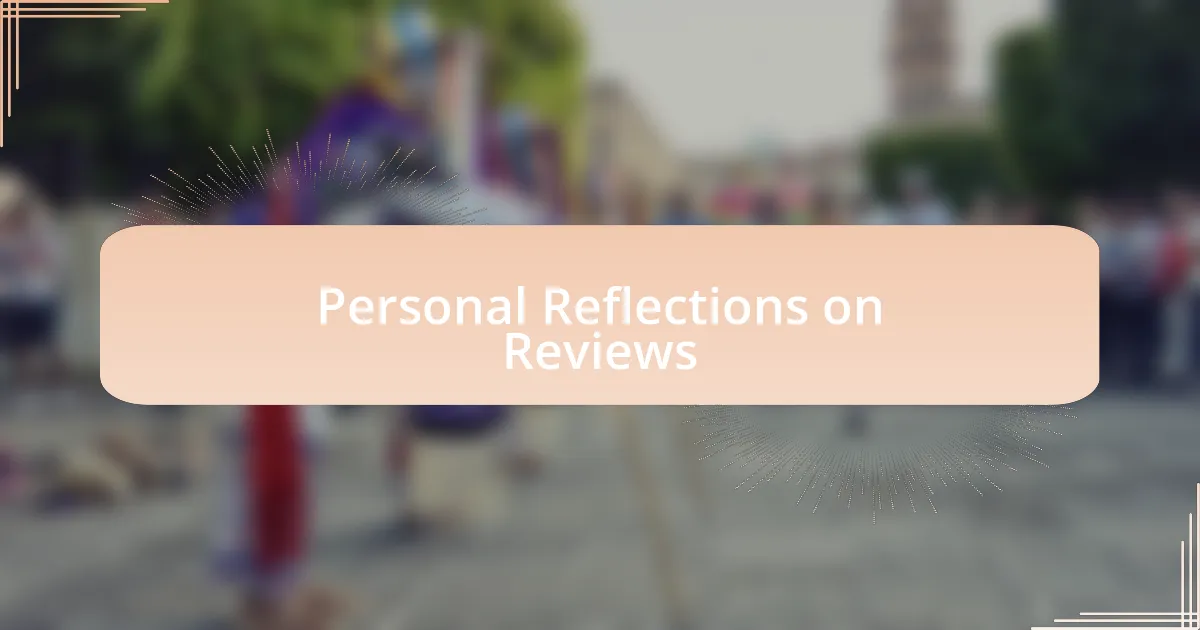
Personal Reflections on Reviews
Reflecting on the feedback after events often brings a wave of emotions. I vividly remember one review where a participant expressed how they felt nervous about showcasing their skills. It struck me deeply because I had once been that anxious dancer, too. How could I support others in overcoming those jitters? It motivated me to rethink how we create a supportive atmosphere, ensuring everyone feels encouraged to share their passion without fear of judgment.
As I sift through the reviews, I find myself considering the unexpected gems hidden within them. There was a comment once about the food options available during an all-day event. It may seem trivial, but that remark made me realize how vital it is for participants to feel taken care of beyond just the dancing. After all, when dancers are fueled and comfortable, they can truly shine on the floor. Have I been putting enough emphasis on these small yet impactful details?
I often come across suggestions that make me pause and think. A dancer once mentioned wanting more opportunities for informal battles or cyphers during breaks. I couldn’t help but smile remembering those spontaneous moments in battles that often lead to connections and growth. They reminded me that the best experiences often arise from unplanned interactions. This reflection reinforces my belief that creating space for these spontaneous elements can enhance our events even more. Do we sometimes overlook the magic that happens when we let spontaneity take the lead?